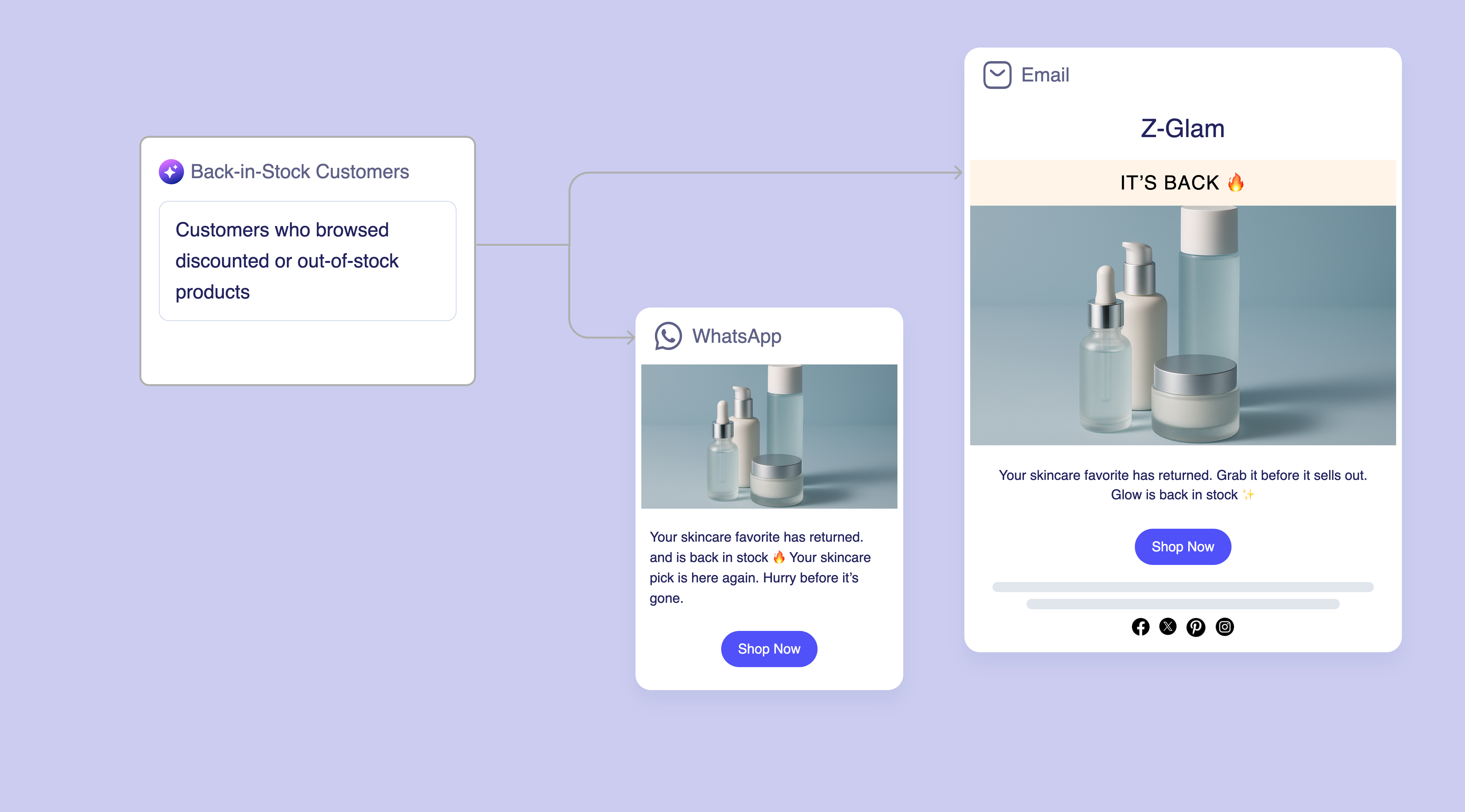
Back in Stock Alerts
Recover interest from users who interacted with out-of-stock products by notifying them when items return to inventory.

What are Back in Stock Alerts?
Back in Stock Alerts target customers who browsed or wishlisted products that were unavailable. When those items return to inventory, brands can automatically send personalized notifications via Email or WhatsApp. These alerts capitalize on proven interest and drive fast conversions before stock runs out again.
Why Back in Stock Alerts Matter

Challenges

Opportunities
Outcomes
Higher Conversion Recovery
Reduced Site Abandonment
Increased Revenue Per Visitor
Who is it for?
Audience
Exclusions
How it Plays Out
A sample sequence for this use case.
Good news — it's back! Your favourite [Product] is now in stock. Get it before it's gone again → [CTA]
It's back! [Product] is now in stock. Don't miss it again → [Link]
Still available but selling fast - grab your [Product] now → [Shop Now]
Limited stock remaining - secure your [Product] before it sells out → [Buy Now]
Best Practices
- Send notifications immediately when products return to stock to capture maximum interest and availability.
- Reference the customer's previous interaction with the out-of-stock item to create personal relevance.
- Create urgency around limited quantities to prevent repeat stockouts and encourage immediate action.
Back in Stock Alerts Examples & Prompts
Channel Examples
Automate with Zenie Prompts
Zenie makes it easy to identify customers waiting for restocks and send timely alerts.
Explore Similar eCommerce Marketing Strategies
FAQs
How quickly should back in stock notifications be sent after restocking?
Most successful eCommerce businesses send back-in-stock alerts within 1-2 hours of inventory updates. Speed is crucial because interested customers may find alternatives or lose interest if notifications are delayed, and popular items often sell out quickly after restocking.
What's the best way to build a back-in-stock notification list?
Marketers should capture interest through prominent "notify me" buttons on out-of-stock product pages, wishlist saves, and cart abandonment flows. Make signup simple with one-click email or phone number capture rather than lengthy forms that create friction.
Should back in stock campaigns include purchase incentives or rely on natural demand?
Most eCommerce marketers find that back-in-stock notifications perform well without additional discounts since customers already showed purchase intent. However, small incentives like free shipping or limited-time offers can help overcome any hesitation developed during the wait period.
How do you manage customer expectations when products frequently go out of stock?
Transparent communication about restock timelines and realistic availability helps maintain customer trust. Some marketers include estimated restock dates in notifications and provide alternatives or similar products to keep customers engaged during wait periods.
What metrics matter most for measuring back-in-stock campaign performance?
Track notification-to-purchase conversion rates, time between restock and sale completion, customer satisfaction with notification timing, and overall revenue recovery from previously unavailable products. Compare conversion rates against regular product launches to measure campaign effectiveness.


